Creating customer personas is a crucial step in understanding your target audience and tailoring your marketing efforts effectively. One valuable source of insights for crafting customer personas is competitor data analysis. By studying your competitors, you can gain a deeper understanding of their customer base, behaviors, and preferences. Welcome to our “Comprehensive Guide to Building Customer Personas.”
(Did you miss part one, the introduction? Go read it here!)
Section One – Intersect’s Comprehensive Guide to Building Customer Personas
Identification is a priority:
Step 1: Identify Your Competitors
Start by identifying your key competitors (remember the definition; anyone aiming for the same segment you are!) in the market. Look for businesses that offer similar products or services and target a similar audience. Make a list of these competitors to analyze.
Step 2: Gather Competitor Data
Collect data on your competitors from various sources. Here are some avenues to explore:
Website Analysis
Study their websites to gather information on their product offerings, pricing strategies, and the tone of their content. Analyze user experience, including ease of navigation and calls to action.
Social Media Presence
Examine their social media profiles. Pay attention to the number of followers, engagement rates, and the type of content they share. Look for customer comments and feedback.
Customer Reviews
Investigate customer reviews on platforms like Yelp, Google My Business, and industry-specific review sites. Identify recurring themes in both positive and negative reviews.
Press Releases and News Articles
Keep an eye on any press releases or news articles related to your competitors. This can provide insights into their latest developments, partnerships, or strategies.
Email Marketing
If possible, sign up for their email newsletters to understand their email marketing strategies. Analyze the frequency of emails, content, and any promotions or offers.
Step 3: Segment Their Customer Base
Once you’ve gathered data on your competitors, segment their customer base. Look for common characteristics and behaviors among their customers. This segmentation will help you identify different customer groups and personas your competitors are targeting.
Step 4: Analyze Their Messaging and Positioning
Study your competitors’ marketing messaging and positioning. What value propositions are they emphasizing? How are they addressing their customers’ pain points? Are they using emotional appeals or highlighting unique selling points?
Step 5: Explore Their Content Strategy
Analyze the type of content your competitors are producing. Are they using blog posts, videos, infographics, or other formats? What topics are they covering, and how frequently are they publishing? Examine the engagement levels on their content to see what resonates with their audience.
Step 6: Understand Their Pricing and Offers
Examine your competitors’ pricing strategies. Are they positioned as premium, budget-friendly, or somewhere in between? Look for any special offers, discounts, or loyalty programs they use to attract and retain customers.
Step 7: Investigate Customer Feedback
Customer reviews and comments on social media can provide valuable insights into your competitors’ strengths and weaknesses. Pay attention to what customers praise and complain about, as this can help you identify pain points to address in your own offerings.
Step 8: Create Customer Personas
Based on your competitor data analysis, create customer personas for each customer segment you’ve identified. Include demographic information, pain points, goals, and preferences in your personas. This will give you a clear picture of the types of customers your competitors are targeting.
Step 9: Validate and Refine
Remember that customer personas should be dynamic and evolve as your business and market change. Continually validate and refine your personas by gathering more data and feedback from your own customers and prospects.
Analyzing competitor data is a valuable strategy for crafting customer personas that resonate with your target audience. By understanding the tactics and strategies employed by your competitors and identifying common characteristics among their customers, you can develop personas that guide your marketing efforts effectively. Keep in mind that while competitor data is insightful, it’s essential to combine it with your own research and customer feedback to create comprehensive and accurate personas.
Step 10: Conduct Interviews and Focus Groups
For in-depth insights, consider conducting interviews or focus groups. These qualitative research methods can help you uncover pain points, motivations, and emotional triggers that quantitative data may not reveal. Sample your existing customers and potential customers to get a diverse range of perspectives.
Crafting customer personas is a vital process in developing effective marketing strategies and delivering customer-centric products and services. While data analytics can provide valuable insights, interviews and focus groups add a qualitative dimension, allowing you to tap into the thoughts, emotions, and experiences of real people.
Why Interviews and Focus Groups?
Before diving into the how-to, it’s essential to understand why interviews and focus groups are valuable tools in the persona development process:
Humanized Data
While data provides quantitative insights, interviews and focus groups offer the qualitative context behind the numbers. They help you understand the “why” behind customer behavior.
Uncover Hidden Insights
Participants may share experiences and pain points that you hadn’t considered. These insights can be eye-opening and lead to more accurate personas.
Empathy and Connection
Hearing directly from customers fosters a sense of empathy. It allows you to connect with their feelings and motivations, leading to more authentic personas.
Section Two – Intersect’s Comprehensive Guide to Building Customer Personas
Up next, it is time to continue refining just who your audience is:
Step 1: Define Your Objectives
Before conducting interviews or focus groups, clarify your objectives. What specific information are you seeking? Are you interested in understanding pain points, motivations, preferences, or experiences? Clear objectives will guide your questions and discussions.
Step 2: Recruit Participants
Identify the individuals who represent your target audience. Consider demographics, behaviors, and psychographics. You want a diverse group that accurately reflects your customer base.
Step 3: Develop a Discussion Guide
Create a structured set of questions and topics to guide the conversation. Ensure your questions align with your objectives. Questions can be open-ended to encourage discussion and exploration.
Step 4: Choose the Right Format
Decide between interviews and focus groups. Interviews are one-on-one conversations and are ideal for more personal or sensitive topics. Focus groups involve multiple participants and can generate group dynamics and insights.
Step 5: Conduct the Sessions
Keep a few things in mind:
Interviews
Schedule one-on-one sessions with participants. Ensure a comfortable environment where they feel at ease sharing their thoughts and experiences, or
Focus Groups
Gather a small group of participants and facilitate a discussion around the prepared topics. The group dynamic can lead to rich insights and diverse perspectives.
Step 6: Active Listening
During interviews and focus groups, practice active listening. Pay attention to not just what participants say but how they say it. Non-verbal cues can provide valuable insights.
Step 7: Record and Transcribe
Record the sessions (with consent) to ensure you capture every detail. Later, transcribe the recordings for analysis. Tools like transcription software can make this process more efficient.
Step 8: Analyze and Synthesize
Review the transcripts and look for patterns, recurring themes, and key takeaways. Use these insights to develop customer personas. Consider demographics, pain points, motivations, goals, and preferences.
Step 9: Create Customer Personas
Based on your analysis, create detailed customer personas. Each persona should have a name, a photo (representative image), and a narrative that includes key information about the persona’s background, challenges, aspirations, and behaviors.
Step 10: Validate and Refine
Customer personas are not set in stone. Periodically validate and refine them as your business evolves and market conditions change. Continue to gather feedback and insights to ensure your personas remain accurate and relevant.
Conducting interviews and focus groups is a powerful method for gaining deep insights into your customers’ thoughts and experiences. By engaging directly with your audience, you can create more authentic and relatable customer personas that guide your marketing strategies, product development, and customer service efforts. Remember that these personas should evolve over time as you learn more about your customers and their evolving needs.
Step 7: Analyze Data and Identify Patterns
Once you’ve collected a wealth of data, it’s time to analyze it. Look for patterns, trends, and commonalities among your audience segments. Pay attention to recurring themes, preferences, and pain points. Tools like data visualization software can help you make sense of complex data sets.
Crafting accurate and insightful customer personas is essential for any business looking to tailor its marketing efforts and product development to its target audience. One crucial step in creating these personas is analyzing data and verifying patterns.
The Significance of Data Analysis and Pattern Verification
Effective customer personas are not mere guesswork; they are rooted in data and reflect real customer behaviors and preferences.
Ensure Accuracy
By rigorously analyzing data, you can be confident that your personas accurately represent your audience.
Guide Decision-Making
Informed decisions about marketing strategies, product development, and customer service are based on the insights gained from data analysis.
Reveal Hidden Insights
Patterns that might not be immediately apparent can emerge during data analysis, leading to deeper understanding.
Adaptability
Regular pattern verification keeps personas up-to-date, reflecting changes in your audience and market.
Section Three – Intersect’s Comprehensive Guide to Building Customer Personas
Next, there’s the gathering, preparation of, and cleaning of collected data:
Step 1: Gather Data
Before you can analyze data and verify patterns, you need a robust dataset. Sources can include customer surveys, website analytics, social media insights, sales records, and customer feedback.
Step 2: Clean and Prepare Data
Data can be messy, with inconsistencies, missing values, and outliers. Clean and prepare your data to ensure it’s ready for analysis. This may involve data cleaning and imputing missing values.
Step 3: Define Metrics and Objectives
Clearly define the metrics you want to focus on and set objectives for your analysis. What aspects of customer behavior are you interested in? What patterns are you hoping to uncover?
Step 4: Analyze Quantitative Data
For quantitative data, such as demographics or website behavior, use statistical tools and software to perform analysis. Explore variables, calculate averages, identify correlations, and create visualizations to reveal patterns.
Step 5: Analyze Qualitative Data
Qualitative data, like customer feedback or open-ended survey responses, requires a more nuanced approach. Categorize and code responses to identify recurring themes and sentiments.
Step 6: Cross-Referencing Data Sources
To verify patterns and enrich your understanding, cross-reference data from different sources. For example, compare survey responses with website analytics to identify patterns in behavior.
Step 7: Validate Patterns
Engage in discussions with your team to validate the patterns and insights you’ve discovered. Sometimes, fresh perspectives can lead to a deeper understanding of the data.
Step 8: Create Customer Personas
Based on the verified patterns and insights, create detailed customer personas. Each persona should include demographic information, pain points, goals, and preferences.
Step 9: Testing and Validation
Don’t stop at pattern verification; continuously validate your personas. Test them against real-world scenarios, campaigns, or product development efforts to see if they align with your audience’s responses and actions.
Step 10: Refinement and Iteration
Customer personas should evolve over time. As your business grows and changes, revisit and refine your personas to ensure they accurately represent your audience’s current reality.
Data analysis and pattern verification are the foundation of crafting customer personas that drive effective marketing, product development, and customer service. By diligently collecting, analyzing, and verifying data, you can create personas that resonate with your target audience and guide your business towards success. Keep in mind that these personas should be dynamic and evolve alongside your audience and market changes.
Step 11: Create Detailed Customer Personas
Based on your research findings, create detailed customer personas. Each persona should include a name, photo, demographic information, job title, goals, challenges, and key buying factors. You may have multiple personas that represent different segments of your audience.
Customer personas are invaluable tools for any business looking to connect with its target audience effectively. These semi-fictional representations of your ideal customers provide insights into their behaviors, preferences, and pain points. In this blog post, we’ll delve into the process of creating detailed customer personas, helping you better understand and relate to your audience.
Why Detailed Customer
Personas Matter
Detailed customer personas offer several benefits:
Targeted Marketing
Personas help you tailor your marketing messages, content, and campaigns to resonate with specific customer segments.
Product Development
Understanding your customers’ needs and pain points guides product or service enhancements and innovations.
Improved Customer Experience
Personas help your customer support and service teams address customer issues and inquiries more effectively.
Alignment Across Teams
Detailed personas provide a shared understanding of your audience, aligning marketing, sales, product development, and customer service efforts.
Section Four – Intersect’s Comprehensive Guide to Building Customer Personas
Start by collecting data about your customers. Sources can include:
Demographics
Age, gender, location, income, education, and job title.
Psychographics
Interests, hobbies, values, and lifestyle.
Behavior
Online behavior, purchase history, and interaction with your brand.
Step 2: Segment Your Audience
Segment your audience into distinct groups based on common characteristics and behaviors. Each segment will serve as the foundation for a persona.
Step 3: Create Detailed Personas
For each segment, follow these steps to create detailed customer personas:
1. Give Them a Name and Face
- Name: Assign a name that represents the persona. For example, “Tech-Savvy Tina” or “Budget-Conscious Brian.”
- Photo: Choose an image or create an illustration that visually represents the persona.
2. Define Demographics
- Age: Specify the age range of your persona.
- Gender: Identify the gender, if relevant.
- Location: Mention where they live or work.
- Income: Estimate their income bracket.
- Education: Indicate their educational background.
- Job: Describe their profession and role.
3. Explore Psychographics
- Interests: List their hobbies, interests, and passions.
- Values: Identify their core values and beliefs.
- Lifestyle: Describe their typical lifestyle, including habits and daily routines.
4. Outline Goals and Challenges
- Goals: What are their short-term and long-term goals? How can your product or service help them achieve these goals?
- Challenges: What obstacles or pain points do they face in their lives? How can your offering address these challenges?
5. Map Their Journey
- Awareness Stage: Where and how do they first learn about products or services like yours?
- Consideration Stage: What factors influence their decision-making process?
- Decision Stage: What motivates them to make a purchase? What concerns or objections might they have?
6. Identify Preferred Communication Channels
- Online Channels: Determine where they spend time online, such as social media platforms or forums.
- Offline Channels: Consider any offline channels they might engage with, like print media or events.
Step 4: Validate and Refine
Customer personas are not static; they should evolve over time. Periodically validate and refine your personas by gathering more data, feedback, and insights from your audience.
Creating detailed customer personas is a crucial step in understanding your audience and tailoring your marketing, product development, and customer service efforts effectively. By following these steps and continuously refining your personas, you’ll be better equipped to connect with your ideal customers and provide them with valuable solutions that meet their specific needs and preferences.
Step 5: Validate and Refine
Customer personas are not set in stone. Periodically validate and refine them as your business evolves and your market changes. Continue to gather feedback and insights to ensure your personas remain accurate and relevant.
Crafting customer personas is a dynamic process that requires continuous improvement and adaptation to remain relevant and effective. To ensure that your personas accurately represent your target audience, it’s essential to validate and refine them regularly.
The Importance of Persona Validation and Refinement
Customer personas serve as the compass guiding your marketing, product development, and customer service efforts. Validating and refining them offer several key benefits:
Accurate Targeting
Ensures that your messaging and strategies continue to resonate with your audience.
Improved Decision-Making
Informs business decisions, such as product enhancements and campaign planning.
Enhanced Customer Experience
Helps your teams provide better support and service to your customers.
Alignment Across Teams
Ensures that all departments have a shared understanding of your audience.
Step 6: Gather Fresh Data
To begin the validation and refinement process, collect new data about your audience. This can include:
Customer Surveys
Conduct surveys to gain insights into evolving preferences, pain points, and behaviors.
Website Analytics
Analyze user behavior on your website to understand how it has changed over time.
Customer Feedback
Review feedback from customer interactions, both positive and negative.
Social Media Insights
Monitor social media engagement to identify current trends and sentiment.
Step 1: Market Research
Stay up-to-date with industry trends and market shifts that may affect your audience.
Step 2: Compare Existing Personas
With the new data in hand, compare it to the characteristics and behaviors of your existing personas. Look for discrepancies and areas where your personas may no longer align with your audience.
Step 3: Identify Outdated Information
Pinpoint elements of your personas that have become outdated or no longer accurately represent your audience. This might include demographic information, preferences, or pain points that have shifted.
Step 4: Conduct Interviews and Surveys
To delve deeper into your audience’s evolving needs and behaviors, consider conducting interviews and surveys with a representative sample of your customers. Ask about their current challenges, goals, and preferences.
Step 5: Refine Persona Details
Based on the new data and insights, refine your personas. Update demographic information, revise goals and challenges, and make any necessary adjustments to their characteristics and behaviors.
Step 6: Validate with Stakeholders
Present the refined personas to relevant stakeholders within your organization, such as marketing, sales, product development, and customer service teams. Ensure that everyone understands and agrees with the changes made.
Step 7: Test and Implement
Put the refined personas to the test by incorporating them into your marketing campaigns, product development processes, and customer service strategies. Monitor the impact of these changes and gather feedback from your teams.
Step 8: Continuously Monitor and Adapt
Persona refinement is an ongoing process. Regularly monitor the performance of your marketing efforts, product features, and customer service initiatives in alignment with your personas. Make adjustments as needed to maintain their accuracy.
Validating and refining customer personas is an essential practice to keep your marketing strategies and business decisions aligned with your evolving audience. By continuously gathering fresh data, identifying outdated information, and adjusting your personas accordingly, you can ensure that they remain effective tools for connecting with your target audience and meeting their evolving needs. Embrace the dynamic nature of customer personas, and they will continue to guide your success in a changing landscape.
Conclusion: The Power is Yours; The End of Intersect’s Comprehensive Guide to Building Customer Personas
Building customer personas through market research is a crucial step in developing a successful marketing strategy. By understanding your audience on a deeper level, you can create more personalized and effective campaigns, products, and services. Remember that market research is an ongoing process, and staying connected with your customers is key to maintaining accurate and valuable personas. Invest the time and effort into this process, and you’ll be better equipped to meet the needs of your target audience and grow your business. With this guide, “Intersect’s Comprehensive Guide to Building Customer Personas” we’ve prepped you for the new experiences you’ll face in your marketing efforts, but there is much more to learn!




